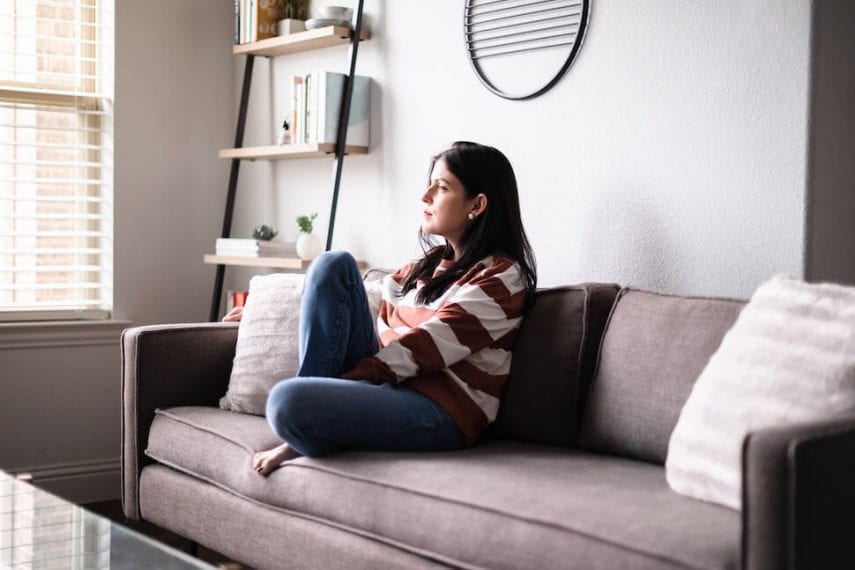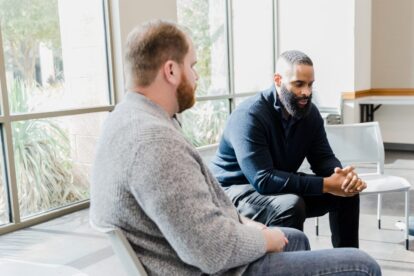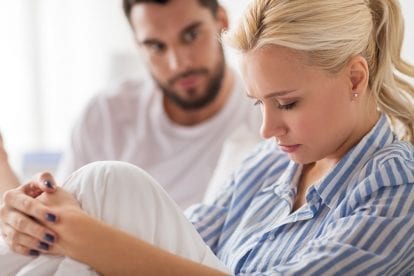I Was Happier Isolated at Home During the Pandemic (Am I Just an Introvert or Is Something Wrong With Me?)

The social isolation of the pandemic was a welcome change for many people. The overbooked and the introverts felt a sense of relief at being required to stay home. If this sounds like you, it’s now time to face a return to a more normal world, which may be challenging. Dreading the onslaught of social events is normal. Major fear and anxiety over it are not. Take small steps to get back into a level of socializing you feel comfortable with and contact a mental health profession if you simply can’t face it.
The pandemic has forced most people to recognize certain truths about themselves. Some realized their relationship didn’t work in isolation. Others discovered just how much they need their in-person social connections to be happy.
More unexpectedly, some people found they actually thrive under circumstances of forced social distancing. If this is you, it doesn’t necessarily mean there is something wrong. However, there are some signs to be aware of that could indicate you actually are lonely, that you’re struggling with depression, or that you have social anxiety.
Introverts vs. Extroverts
One positive explanation for those who settled nicely into the quarantine period is a personality style known as introversion. While all our personalities can’t truly be simplified to this degree, most people have a tendency to be either more introverted or more extroverted.
According to the American Psychological Association, introversion is an “orientation toward the internal private world of one’s inner thoughts and feelings, rather than toward the outer world of people and things.”
In other words, you value alone time, reflection, and quiet. If you’re an introvert, you may have felt the lack of parties and other big events to be a welcome break. Introversion is a continuum, so you may have some or all of these typical characteristics and to varying degrees:
- You like to spend time by yourself, often choosing it over socializing with others.
- Social interactions leave you feeling drained of energy.
- You work well alone and prefer that to collaborations.
- Your social circle is small.
- You prefer to communicate through writing rather than talking, especially over the phone.
- You spend time daydreaming, reflecting, or generally focusing inward.
- You tend to zone out in certain situations.
People who tend toward extroversion are the opposite in many ways. They thrive in social situations, crave social time, and avoid alone time. They have a lot of friends and like to talk to communicate or solve problems.
Did All Introverts Really Enjoy the Quarantine?
Understandably, introverts probably fared better during the quarantine than extroverts. Many experienced a sense of relief when events got cancelled. They loved the idea of staying home to watch a movie rather than going to a party or bar.
When the pandemic began and governments put lockdowns in place, introverts declared it their time to shine. But did it really work out that way? For some people, yes, but it’s not so simple. For instance, many people got roped into online social gatherings, which for an introvert can be even more draining than in-person events. It’s not easy to find an excuse to back out of a Zoom call during a quarantine.
Even introverts need some social interaction, but the quarantine required everyone to be more creative about it. Extroverts tend to be more flexible and content with virtual meetings and phone calls. Introverts are more likely to avoid these interactions, causing them to become more isolated during quarantine.
There may even be some evidence that introverts fared worse during the pandemic in terms of mental health symptoms. These include loneliness, depression, and anxiety. The results may be due to an introvert’s inflexibility in ways of socializing.
Potential Issues With Enjoying Social Isolation
If you are an introvert, and you found some peace and satisfaction being forced to stay home and avoid social gatherings, there’s not much reason for worry. On the other hand, there could be an issue if the idea of a return to normal fills you with dread.
Introverts turn inward and value alone time, but this doesn’t mean they don’t enjoy socializing or that they don’t get benefits from it. You may prefer a one-on-one coffee date with a friend to a party, for instance, but not seeing any friends for weeks or months at a time is not necessarily enjoyable for an introvert.
Here are some signs and potential issues that could indicate your unwillingness to let go of quarantine is problematic:
- Your social interactions have gone down to zero or close to it.
- You’re languishing rather than thriving, finding it difficult to get tasks done, concentrate, or do anything meaningful.
- You feel depressed or anxious a lot.
- Thinking about going back to in-person interactions causes severe anxiety or dread.
- You feel lonely but fear reaching out to anyone.
- If you have a mental illness, your symptoms have worsened.
Call for a Free Confidential Assessment.
877-727-4343How to Transition Back to a More Social World
If you have any signs that you’re not handling isolation well, even if you think you like it, it’s best to see your doctor or therapist. A mental health professional can evaluate you, offer advice, and provide therapy sessions to help you manage the anxiety and fear you associate with going back to a more social life.
If you don’t have any mental health issues, but still worry about the transition, take it slowly. Give yourself time and be patient as you make this shift. Here are some things you can do to make it a little easier and to actually enjoy being social again:
- Reflect on your pre-pandemic life. This is a great time for reflection. Think critically about what your life was like before the pandemic. Did you socialize a lot? Was your calendar always full? Did you feel pressured to go out more than you wanted to? Change what you didn’t like. Limit your social interactions if that makes you happy. Learn to say no to events and people.
- Set limits for socializing. Decide how many social activities you’ll engage in per week to maximize your wellness and mental health. Maybe that means always reserving Friday nights for yourself or capping social events at two for the whole week. Choose what works for you, and schedule your alone time.
- Choose your friends wisely. As you plan a new normal after the pandemic, consider your social circle. Be more intentional about who will get your precious time. If you prefer having closer relationships with a few friends, shrink your social circle.
- Start with the friends who make you feel comfortable. For those first few social engagements, pick the friends and family members it’s easiest for you to be around. This will make it easier to dive back in. Consider it training for other social events.
- Know your limits and leave early. If you accept an invitation to a party and decide to go, pay attention to how you feel when there. You might put in an hour of chatting and feel drained. Don’t feel bad about going home at that point.
- Embrace the challenges. It may feel more comfortable right now to stay home and avoid gatherings, but it’s healthy to challenge yourself sometimes. Pushing your boundaries within reason helps you grow. Some discomfort and anxiety are necessary to get back into a healthy social life.
Your social life may look different post-pandemic, but you still need it. No matter how much you enjoyed the imposed isolation, social contact is essential for good mental health. Make changes to suit your personality, limit interactions if you need to, but do get back out there. Push yourself past the discomfort so you can reap the benefits.






